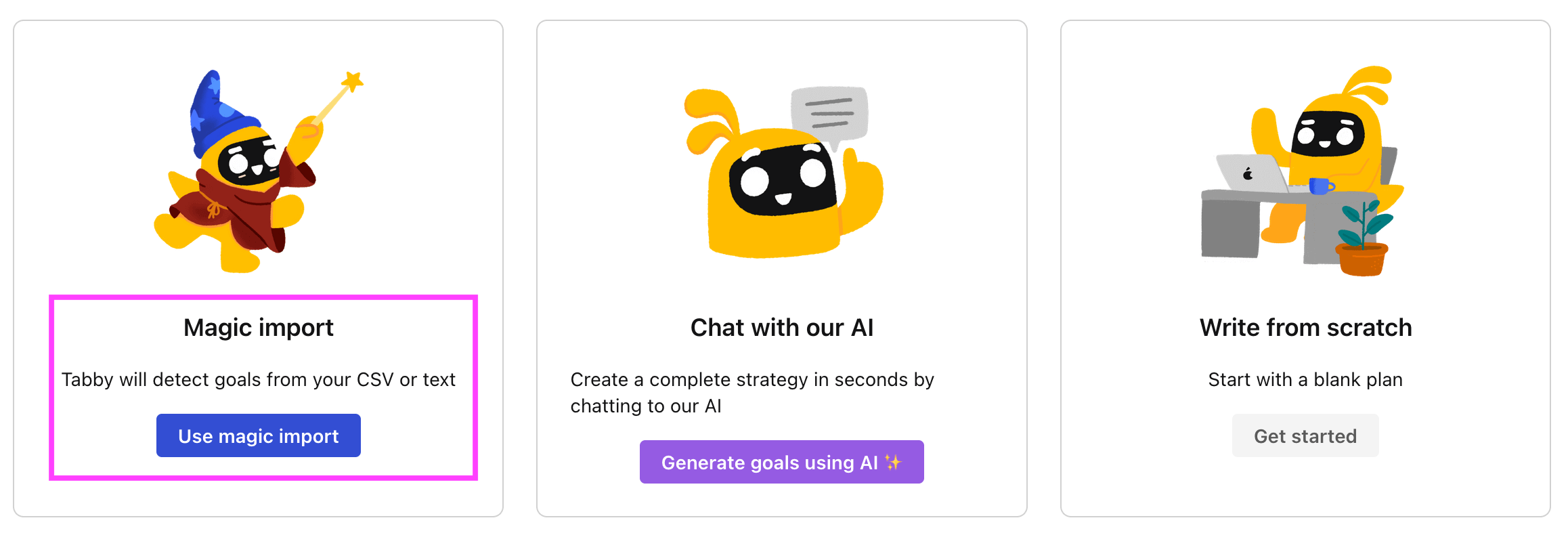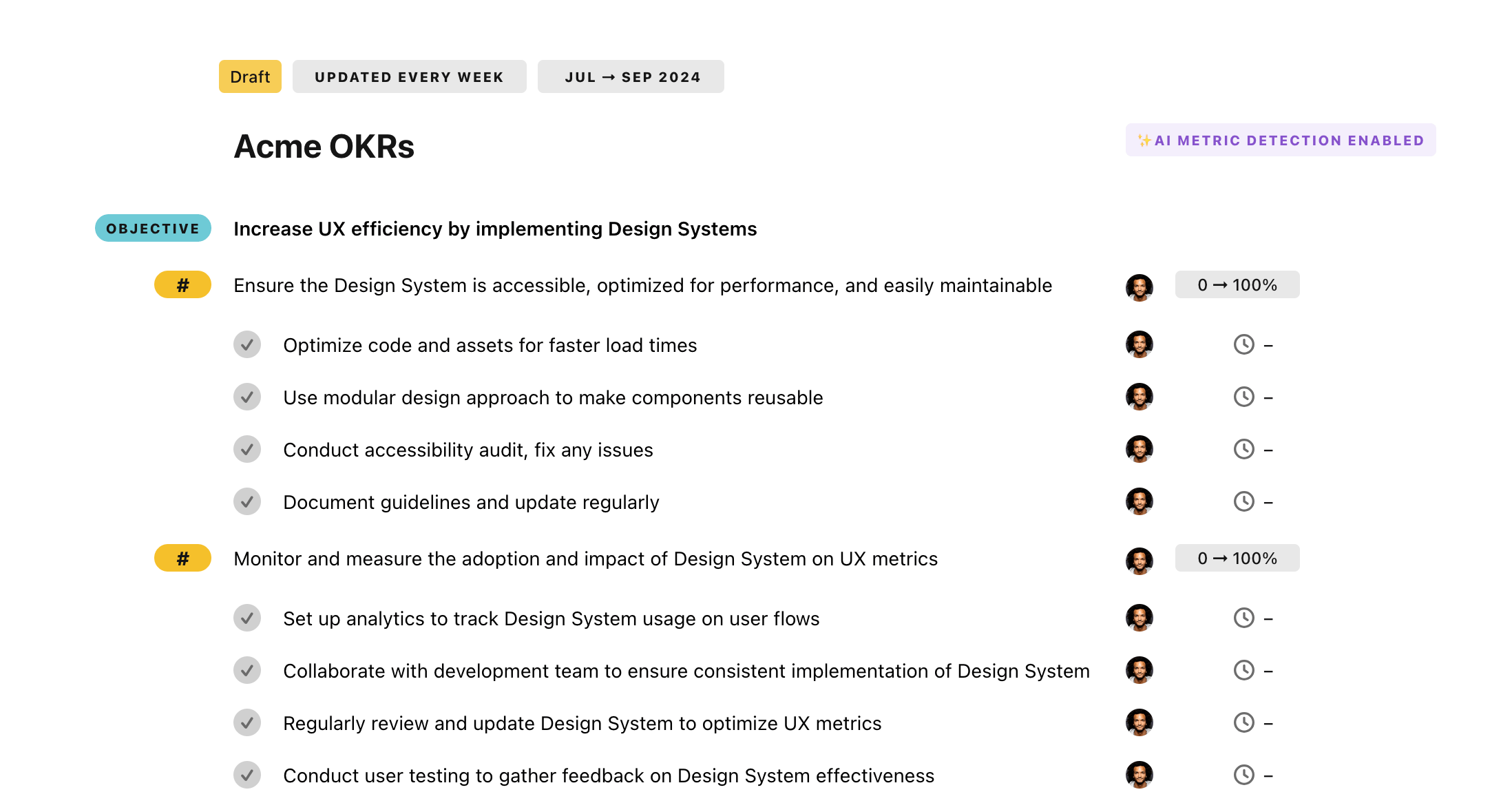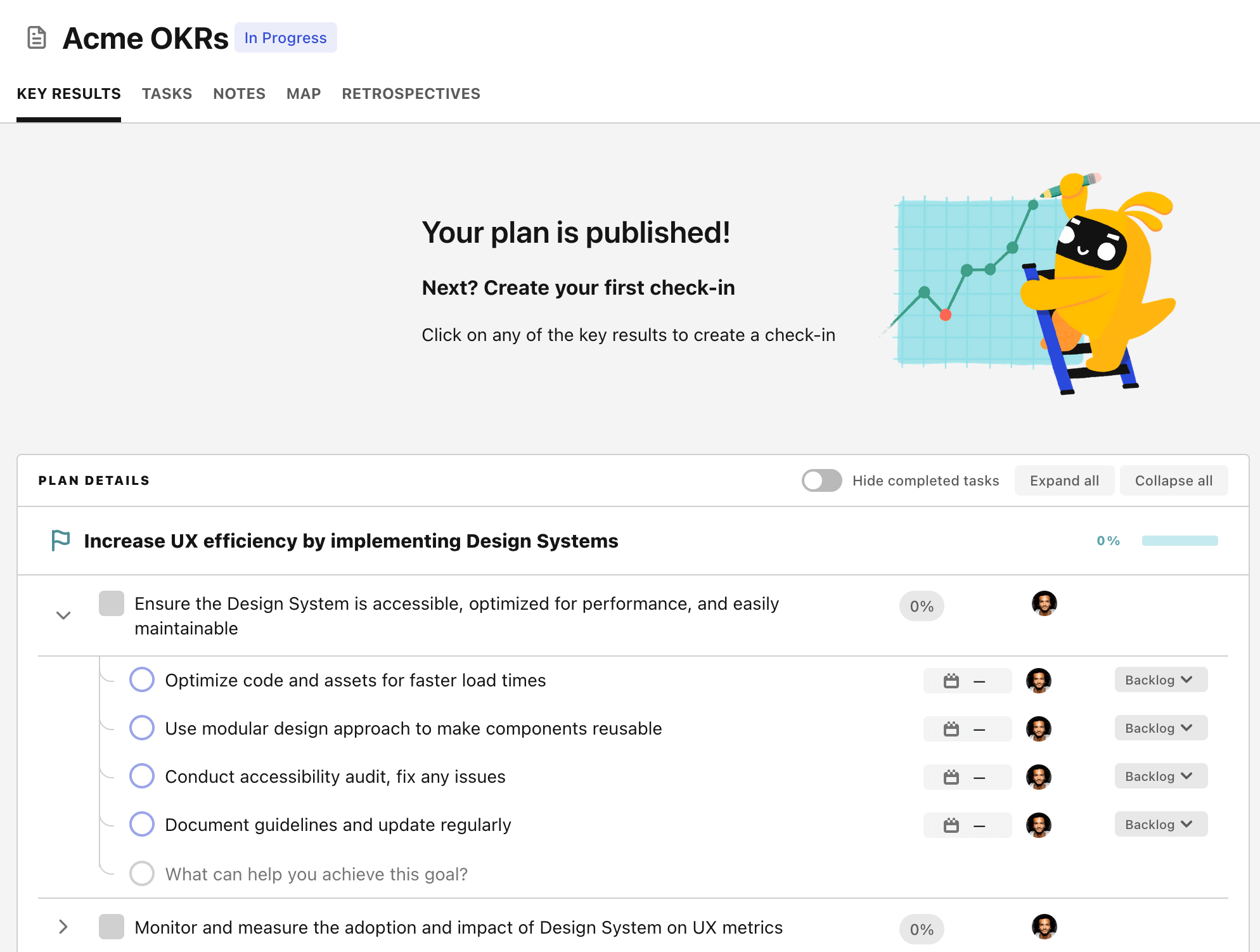OKR template to elevate phonics skills of first graders
Your OKR template
The second aspect of the objective calls for the initiation and completion of two new phonics-focused teaching modules. This goal will be realized by teaching and completing the new phonics modules for students, preparing lesson plans and materials for each module, and discovering and determining the most effective new phonics-themed teaching modules.
Next, the target is to obtain an 80% mastery level in phonics skills for all students in grade one. This objective will be met by teaching daily phonics lessons targeted at beginners, equipping interactive phonics-based learning materials, and frequently assessing students' phonics comprehension.
This OKR is important as phonics is a foundational skill in reading and languages. It enables children to understand and present written texts effectively. It also promotes literacy skills, enhances vocabulary, and aids in thematic teaching.
ObjectiveElevate phonics skills of first graders
KRIncrease average phonics test scores by 20%
Regularly monitor and assess students' phonics progression
Implement intensive, targeted phonics training for teachers
Introduce advanced, interactive phonics software for students
KRInitiate and complete two new phonics-focused teaching modules
Teach and complete these phonics modules for students
Develop lesson plans and materials for each module
Research and select two new phonics-focused teaching modules
KRAchieve 80% mastery in phonics skills for all grade 1 students
Implement daily phonics lessons targeted at beginners
Resource interactive phonics-based learning materials
Regularly assess students' phonics comprehension
How to edit and track OKRs with Tability
You'll probably want to edit the examples in this post, and Tability is the perfect tool for it.
Tability is an AI-powered platform that helps teams set better goals, monitor execution, and get help to achieve their objectives faster.
With Tability you can:
- Use AI to draft a complete set of OKRs in seconds
- Connect your OKRs and team goals to your project
- Automate reporting with integrations and built-in dashboard
Instead of having to copy the content of the OKR examples in a doc or spreadsheet, you can use Tability’s magic importer to start using any of the examples in this page.
The import process can be done in seconds, allowing you to edit OKRs directly in a platform that knows how to manage and track goals.
Step 1. Sign up for a free Tability account
Go tohttps://tability.app/signup and create your account (it's free!)
Step 2. Create a plan
Follow the steps after your onboarding to create your first plan, you should get to a page that looks like the picture below.

Step 3. Use the magic importer
Click on Use magic import to open up the Magic Import modal.
Now, go back to the OKR examples, and click on Copy on the example that you’d like to use.

Paste the content in the text import section. Don’t worry about the formatting, Tability’s AI will be able to parse it!

Now, just click on Import from text and let the magic happen.

Once your example is in the plan editor, you will be able to:
- Edit the objectives, key results, and tasks
- Click on the target 0 → 100% to set better target
- Use the tips and the AI to refine your goals
Step 4. Publish your plan
Once you’re done editing, you can publish your plan to switch to the goal-tracking mode.

From there you will have access to all the features that will help you and your team save hours with OKR reporting.
- 10+ built-in dashboards to visualise progress on your goals
- Weekly reminders, data connectors, and smart notifications
- 9 views to map OKRs to strategic projects
- Strategy map to align teams at scale